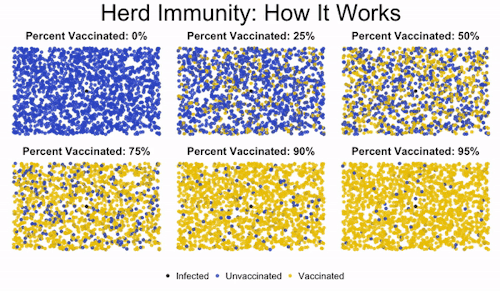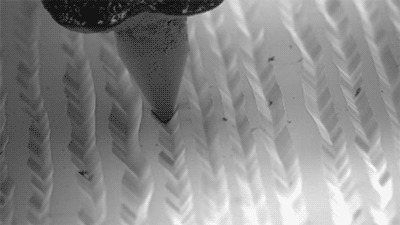From Retina To Cortex: An Unexpected Division Of Labor

From retina to cortex: An unexpected division of labor
Neurons in our brain do a remarkable job of translating sensory information into reliable representations of our world that are critical to effectively guide our behavior. The parts of the brain that are responsible for vision have long been center stage for scientists’ efforts to understand the rules that neural circuits use to encode sensory information. Years of research have led to a fairly detailed picture of the initial steps of this visual process, carried out in the retina, and how information from this stage is transmitted to the visual part of the cerebral cortex, a thin sheet of neurons that forms the outer surface of the brain. We have also learned much about the way that neurons represent visual information in visual cortex, as well as how different this representation is from the information initially supplied by the retina. Scientists are now working to understand the set of rules—the neural blueprint— that explains how these representations of visual information in the visual cortex are constructed from the information provided by the retina. Using the latest functional imaging techniques, scientists at MPFI have recently discovered a surprisingly simple rule that explains how neural circuits combine information supplied by different types of cells in the retina to build a coherent, information-rich representation of our visual world.
Vision begins with the spatial pattern of light and dark that falls on the retinal surface. One important function performed by the neural circuits in the visual cortex is the preservation of the orderly spatial relationships of light versus dark that exist on the retinal surface. These neural circuits form an orderly map of visual space where each point on the surface of the cortex contains a column of neurons that each respond to a small region of visual space— and adjacent columns respond to adjacent regions of visual space. But these cortical circuits do more than build a map of visual space: individual neurons within these columns each respond selectively to the specific orientation of edges in their region of visual space; some neurons respond preferentially to vertical edges, some to horizontal edges, and others to angles in between. This property is also mapped in a columnar fashion where all neurons in a radial column have the same orientation preference, and adjacent columns prefer slightly different orientations.
Things would be easy if all the cortex had to do was build a map of visual space: a simple one to one mapping of points on the retinal surface to columns in the cortex would be all that was necessary. But building a map of orientation that coexists with the map of visual space is a much greater challenge. This is because the neurons of the retina do not distinguish orientation in the first step of vision. Instead, information on the orientation of edges must be constructed by neural circuits in the visual cortex. This is done using information supplied from two distinct types of retinal cells: those that respond to increases in light (ON-cells) and those that respond to decreases in light (OFF-cells). Adding to the complexity, orientation selectivity depends on having individual cortical neurons receive their ON and OFF signals from non-overlapping regions of visual space, and the spatial arrangement of these regions determines the orientation preference of the cell. Cortical neurons that prefer vertical edge orientations have ON and OFF responsive regions that are displaced horizontally in visual space, those that prefer horizontal edge orientations have their ON and OFF regions displaced vertically in visual space, and this systematic relationship holds for all other edge orientations.
So cortical circuits face a paradox: How do they take the spatial information from the retina and distort it to create an orderly map of orientation selectivity, while at the same time preserving fine retinal spatial information in order to generate an orderly map of visual space? Nature’s solution might best be called ‘divide and conquer’. By using imaging technologies that allow visualization of the ON and OFF response regions of hundreds of individual cortical neurons, Kuo-Sheng Lee and Sharon Huang in David Fitzpatrick’s lab at MPFI have discovered that fine scale retinal spatial information is preserved by the OFF response regions of cortical neurons, while the ON response regions exhibit systematic spatial displacements that are necessary to build an orderly map of edge orientation. Preserving the detailed spatial information from the retina in the OFF response regions is consistent with evidence that dark elements of natural scenes convey more fine scale information than the light elements, and that OFF retinal neurons have properties that allow them to better extract this information. In addition, Lee et al. show that this OFF-anchored cortical architecture enables emergence of an additional orderly map of absolute spatial phase—a property that hasn’t received much attention from neuroscientists, but computer vision research has shown contains a wealth of information about the visual scene that can be used to efficiently encode spatial patterns, motion, and depth.
While these are important new insights into how visual information is transformed from retina to cortical representations, they pose a host of new questions about the network of synaptic connections that performs this transformation, and the developmental mechanisms that construct it, questions that the Fitzpatrick Lab continues to explore.
More Posts from Science-is-magical and Others
Here are 17 jaw-dropping photos of space that show us just how small we really are:
This photo of the moon and Earth taken from the International Space Station.

A dwarf galaxy, about 11 million light-years away from us.

Earth as seen from the moon in 1968.

A cluster of stars, 20,000 light-years away from Earth.

The first flower grown in the International Space Station, photographed by astronaut Scott Kelly.

Saturn, seen through an infared filter.

These visible “loops” on the surface of the sun can reach up to 15 times the diameter of Earth in height.

The Northen Lights just North of Chicago, viewed from the International Space Station.

The Quintuplet Cluster, located 100 light-years from the center of our galaxy.

Pluto and one of its moons, Charon.

The Great Pyramids of Giza, seen from space.

Astronaut Bruce McCandless maneuvering, untethered, above Earth in 1984.

Galaxy NGC 6240, 400 million light-years away from Earth.

Palomar 12, a cluster of stars on the outskirts of the Milky Way.

The remnants of an exploded star.

New York City, seen from the International Space Station.

And the remains of a supernova whose explosion may have been seen almost 2,000 years ago by Chinese astronomers.
Follow @the-future-now

Deconstructing the placebo response: Why does it work in treating depression?
In the past three decades, the power of placebos has gone through the roof in treating major depressive disorder. In clinical trials for treating depression over that period of time, researchers have reported significant increases in patient’s response rates to placebos — the simple sugar pills given to patients who think that it may be actual medication.
New research conducted by UCLA psychiatrists helps explain how placebos can have such a powerful effect on depression.
“In short,” said Andrew Leuchter, the study’s first author and a professor of psychiatry at the UCLA Semel Institute for Neuroscience and Human Behavior, “if you think a pill is going to work, it probably will.”
The UCLA researchers examined three forms of treatment. One was supportive care in which a therapist assessed the patient’s risk and symptoms, and provided emotional support and encouragement but refrained from providing solutions to the patient’s issues that might result in specific therapeutic effects. The other two treatments provided the same type of therapy, but patients also received either medication or placebos.
The researchers found that treatment that incorporating either type of pill — real medication or placebo — yielded better outcomes than supportive care alone. Further, the success of the placebo treatment was closely correlated to people’s expectations before they began treatment. Those who believed that medication was likely to help them were much more likely to respond to placebos. Their belief in the effectiveness of medication was not related to the likelihood of benefitting from medication, however.
“Our study indicates that belief in ‘the power of the pill’ uniquely drives the placebo response, while medications are likely to work regardless of patients’ belief in their effectiveness,” Leuchter said.
The study appears in the current online edition of the British Journal of Psychiatry.
At the beginning and end of the study, patients were asked to complete the Hamilton Rating Scale for Depression, giving researchers a quantitative assessment of how their depression levels changed during treatment. Those who received antidepressant medication and supportive care improved an average of 46 percent, patients who received placebos and supportive care improved an average of 36 percent, and those who received supportive care alone improved an average of just 5 percent.
“Interestingly, while we found that medication was more effective than placebo, the difference was modest,” Leuchter said.
The researchers also found that people who received supportive care alone were more likely to discontinue treatment early than those who received pills.
People with major depressive disorder have a persistent low mood, low self-esteem and a loss of pleasure in things they once enjoyed. The disorder can be disabling, and it can affect a person’s family, work or school life, sleeping and eating habits, and overall health.
In the double-blind study, 88 people ages 18 to 65 who had been diagnosed with depression were given eight weeks of treatment. Twenty received supportive care alone, 29 received a placebo with supportive care and 39 received actual medication with supportive care.
The researchers measured the patients’ expectations for how effective they thought medication and general treatment would be, as well as their impressions of the strength of their relationship with the supportive care provider.
“These results suggest a unique role for people’s expectations about their medication in engendering a placebo response,” Leuchter said. “Higher expectations of medication effectiveness predicted an improvement in placebo-treated subjects, and it’s important to note that people’s expectations about how effective a medication may be were already formed before they entered the trial.”
Leuchter said the research indicates that factors such as direct-to-consumer advertising may be shaping peoples’ attitudes about medication. “It may not be an accident that placebo response rates have soared at the same time the pharmaceutical companies are spending $10 billion a year on consumer advertising.”
(Image credit: © Chris Lamphear)

A group of astronomers is using a new method to search for hard to spot alien planets: By measuring the difference between the amount of light coming from the planets’ daysides and nightsides, astronomers have spotted 60 new worlds thus far.
Continue Reading.

Herd immunity is the idea that if enough people get immunized against a disease, they’ll create protection for even those who aren’t vaccinated. This is important to protect those who can’t get vaccinated, like immunocompromised children.
You can see in the image how low levels of vaccination lead to everyone getting infected. Medium levels slow down the progression of the illness, but they don’t offer robust protection to the unvaccinated. But once you read a high enough level of vaccination, the disease gets effectively road-blocked. It can’t spread fast enough because it encounters too many vaccinated individuals, and so the majority of the population (even the unvaccinated people) are protected.
Find out more here.
-
 andshes-a-jollygoodfellow reblogged this · 5 years ago
andshes-a-jollygoodfellow reblogged this · 5 years ago -
 andshes-a-jollygoodfellow liked this · 5 years ago
andshes-a-jollygoodfellow liked this · 5 years ago -
 kanade-frisk-02 liked this · 5 years ago
kanade-frisk-02 liked this · 5 years ago -
 queerhistorymajor reblogged this · 5 years ago
queerhistorymajor reblogged this · 5 years ago -
 wingssprd liked this · 5 years ago
wingssprd liked this · 5 years ago -
 dawnism101 liked this · 5 years ago
dawnism101 liked this · 5 years ago -
 milkshakehaver liked this · 5 years ago
milkshakehaver liked this · 5 years ago -
 theprestigeistricky liked this · 5 years ago
theprestigeistricky liked this · 5 years ago -
 itstere1995 reblogged this · 5 years ago
itstere1995 reblogged this · 5 years ago -
 itstere1995 liked this · 5 years ago
itstere1995 liked this · 5 years ago -
 mc-reg reblogged this · 5 years ago
mc-reg reblogged this · 5 years ago -
 mc-reg liked this · 5 years ago
mc-reg liked this · 5 years ago -
 hvppy0ne liked this · 5 years ago
hvppy0ne liked this · 5 years ago -
 takeru1996 liked this · 5 years ago
takeru1996 liked this · 5 years ago -
 sarcasticallysavage reblogged this · 5 years ago
sarcasticallysavage reblogged this · 5 years ago -
 sarcasticallysavage liked this · 5 years ago
sarcasticallysavage liked this · 5 years ago -
 laszlogasd reblogged this · 5 years ago
laszlogasd reblogged this · 5 years ago -
 laszlogasd liked this · 5 years ago
laszlogasd liked this · 5 years ago -
 nekosahkiat777 reblogged this · 5 years ago
nekosahkiat777 reblogged this · 5 years ago -
 andrea007candy liked this · 5 years ago
andrea007candy liked this · 5 years ago -
 47secondsofveritas liked this · 5 years ago
47secondsofveritas liked this · 5 years ago -
 eriakit reblogged this · 5 years ago
eriakit reblogged this · 5 years ago -
 eriakit liked this · 5 years ago
eriakit liked this · 5 years ago -
 fillethebitch liked this · 5 years ago
fillethebitch liked this · 5 years ago -
 ypnhot liked this · 5 years ago
ypnhot liked this · 5 years ago -
 why-is-this-so-weird liked this · 5 years ago
why-is-this-so-weird liked this · 5 years ago -
 musicalpandas liked this · 5 years ago
musicalpandas liked this · 5 years ago -
 the-villain-within liked this · 5 years ago
the-villain-within liked this · 5 years ago -
 captaincutthroatcunt liked this · 5 years ago
captaincutthroatcunt liked this · 5 years ago -
 like-the-cracker liked this · 5 years ago
like-the-cracker liked this · 5 years ago -
 goodservant-badmaster liked this · 5 years ago
goodservant-badmaster liked this · 5 years ago -
 apollonexus liked this · 5 years ago
apollonexus liked this · 5 years ago -
 nippper reblogged this · 5 years ago
nippper reblogged this · 5 years ago -
 arrozconaguacat3 liked this · 5 years ago
arrozconaguacat3 liked this · 5 years ago -
 hiphopxix liked this · 5 years ago
hiphopxix liked this · 5 years ago -
 surgoiaru liked this · 5 years ago
surgoiaru liked this · 5 years ago -
 milliemay04 liked this · 5 years ago
milliemay04 liked this · 5 years ago -
 jeh910035 liked this · 5 years ago
jeh910035 liked this · 5 years ago




